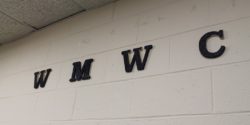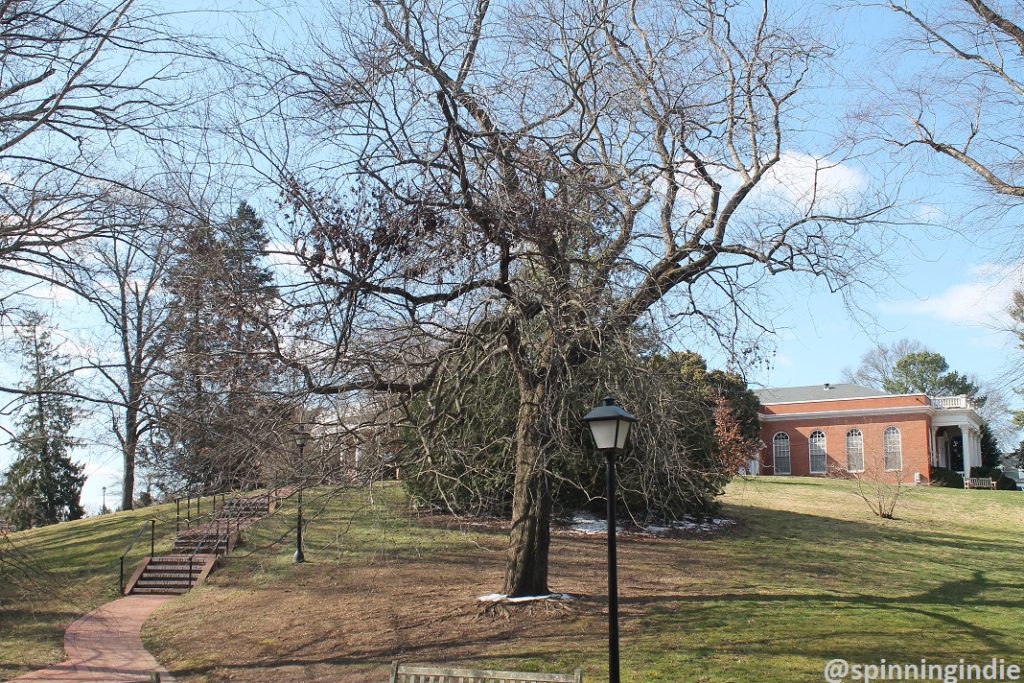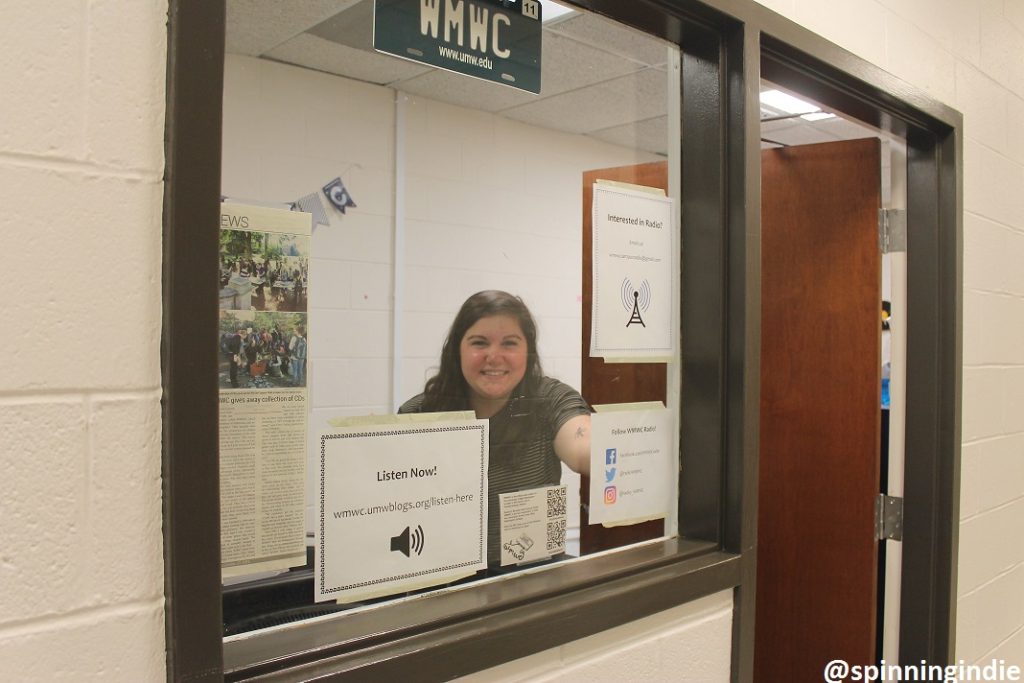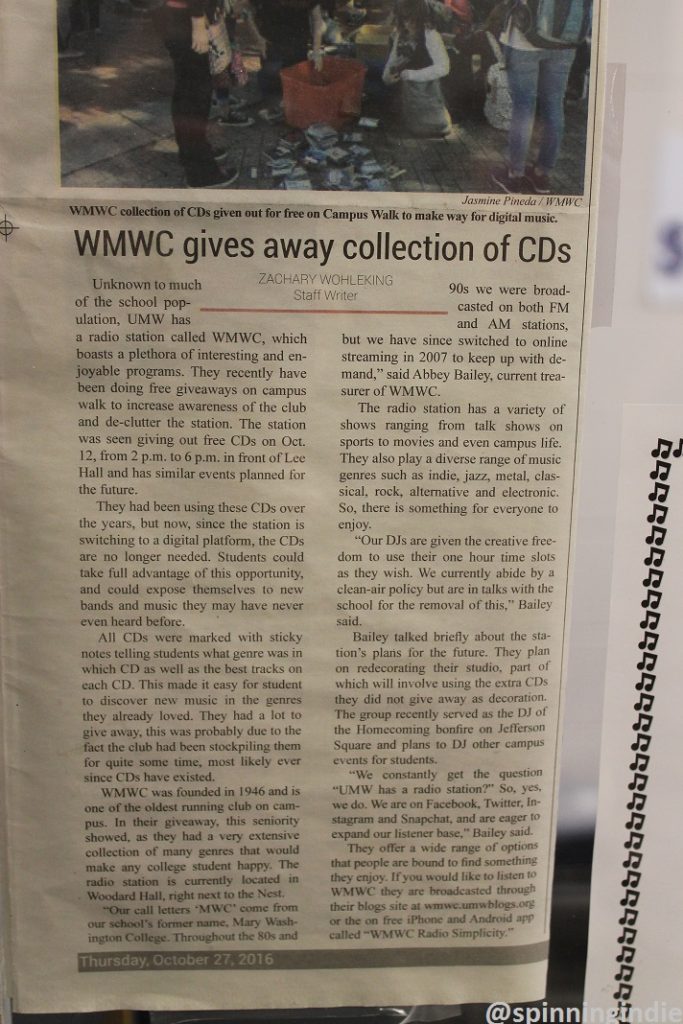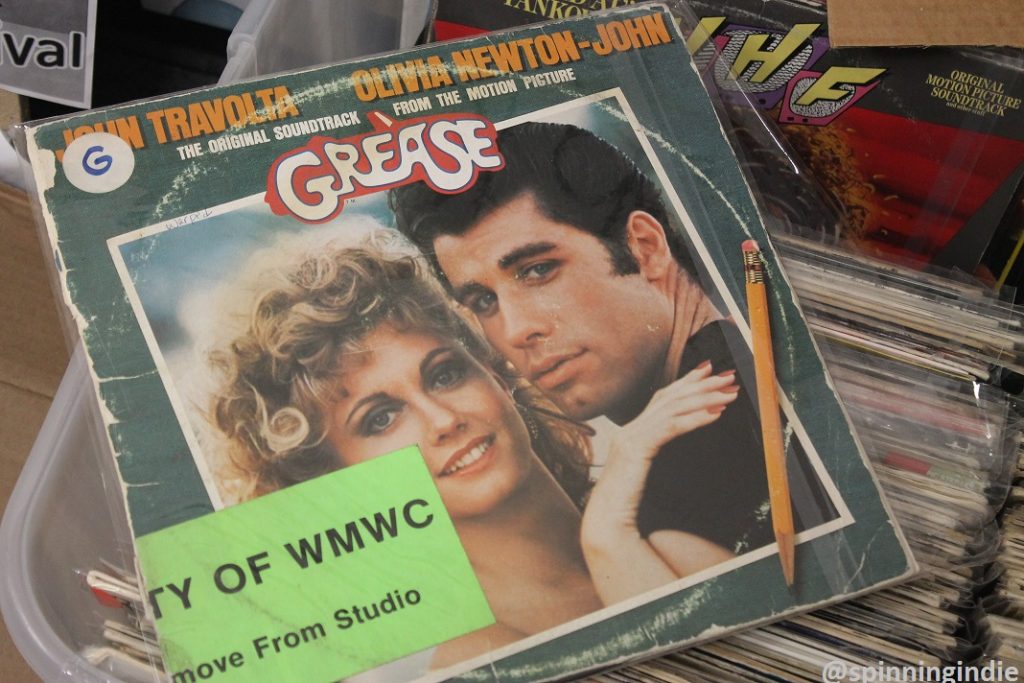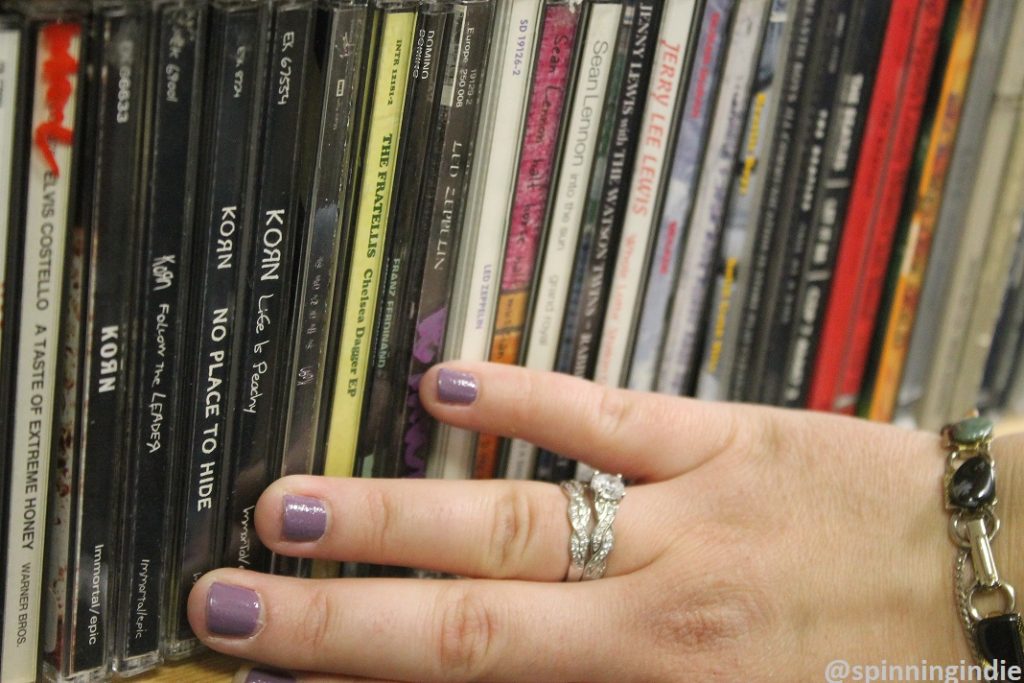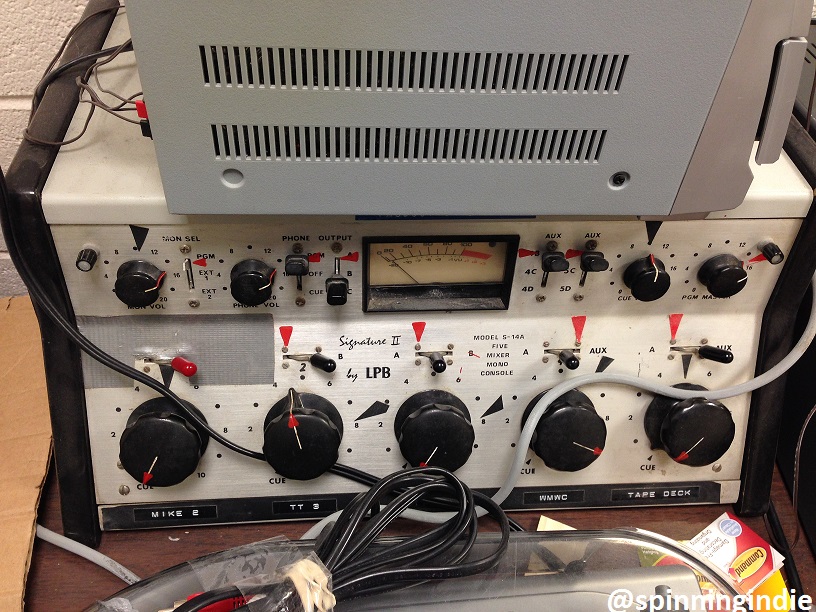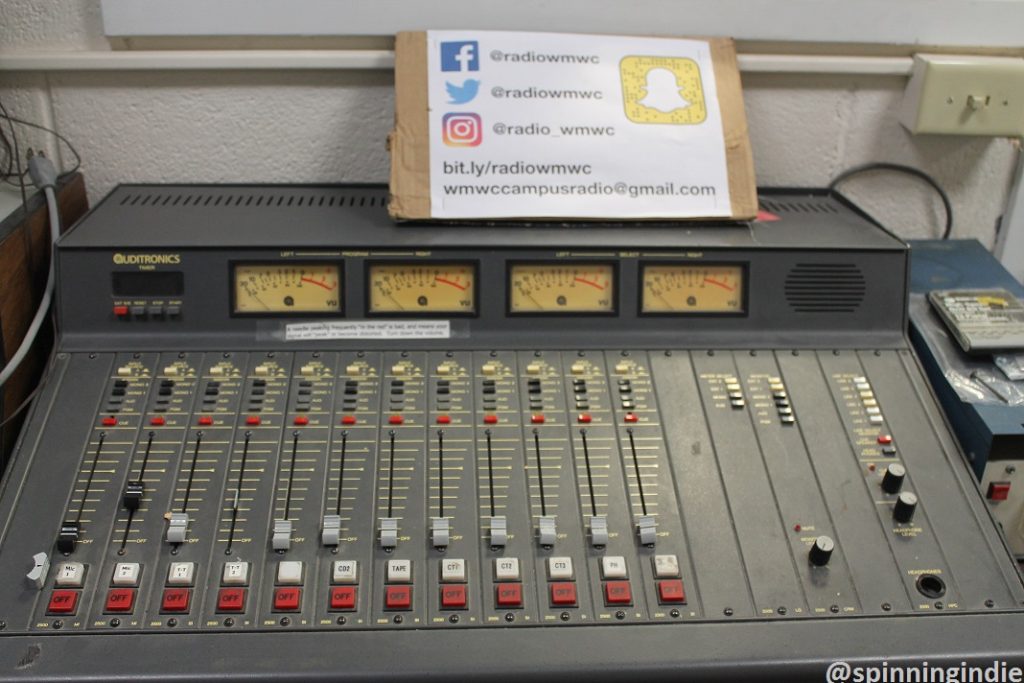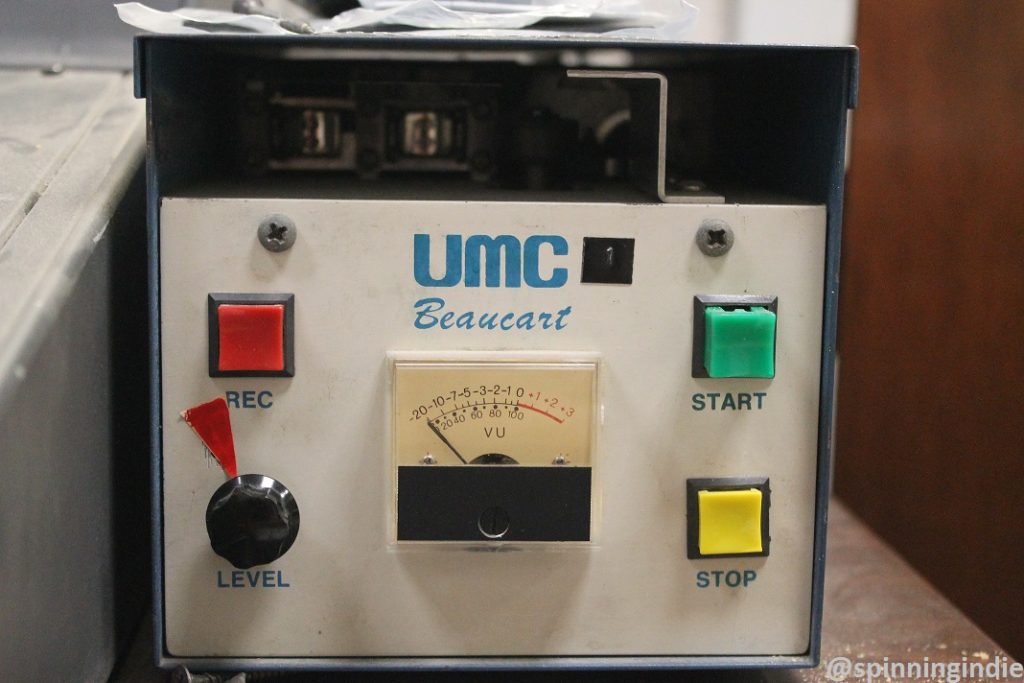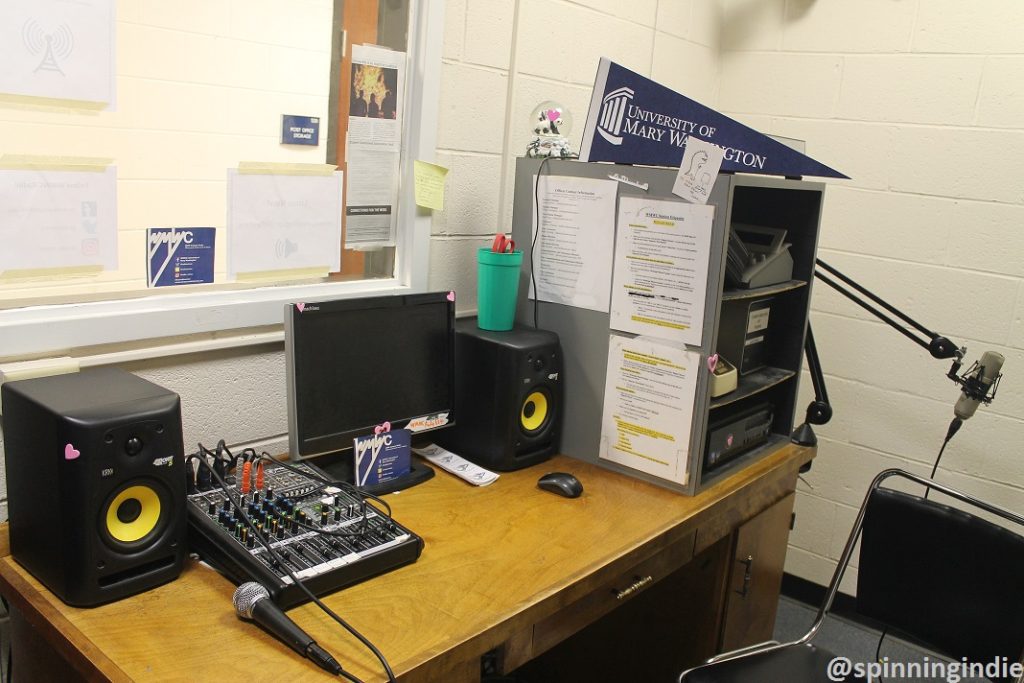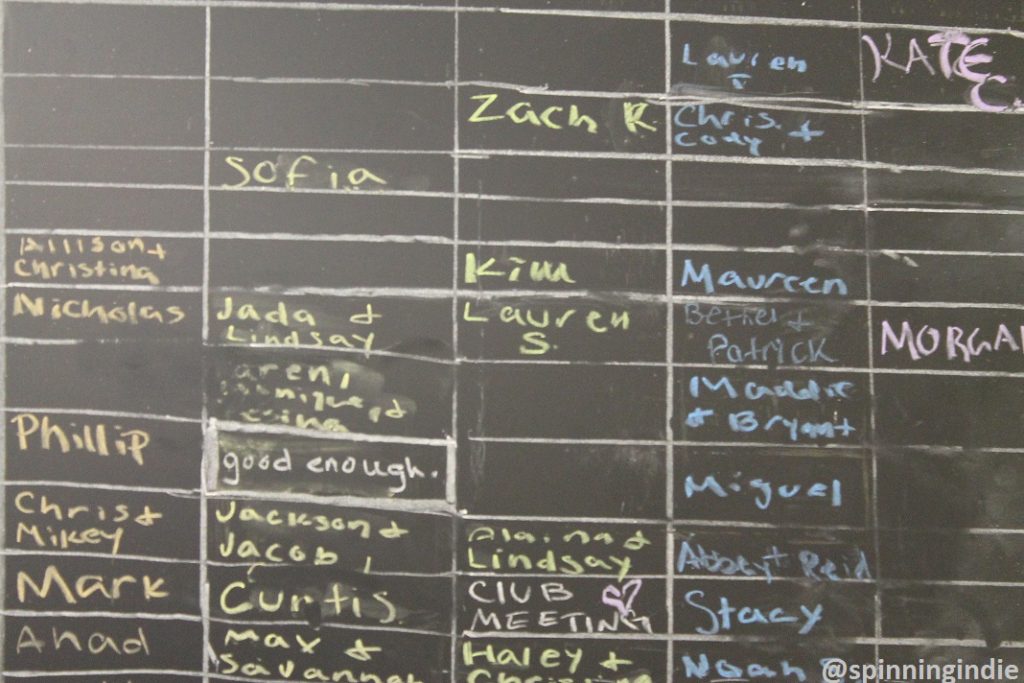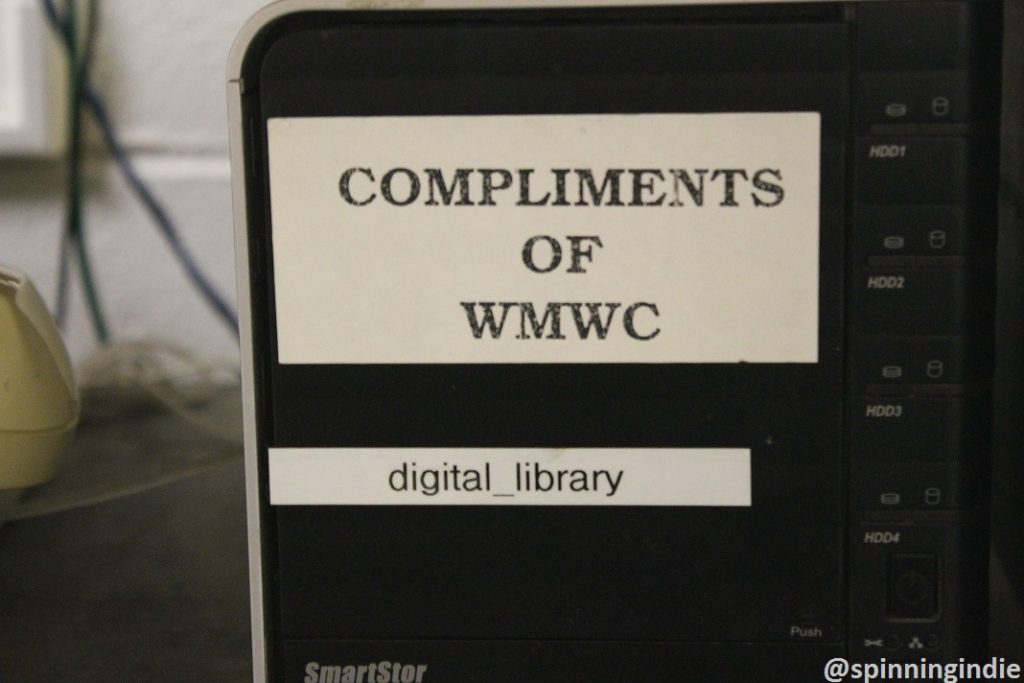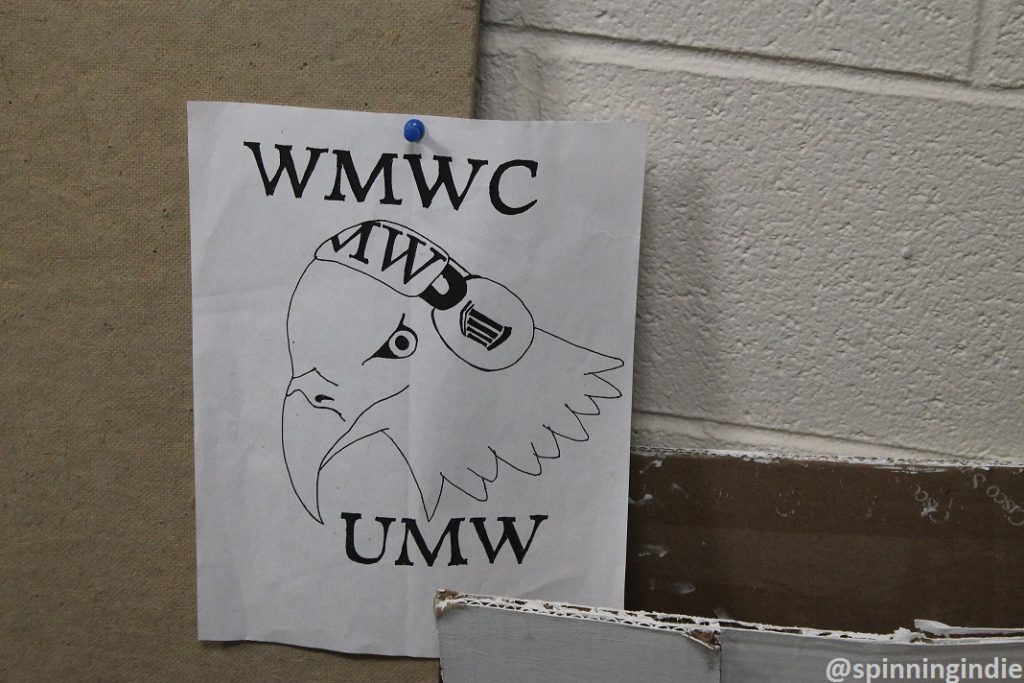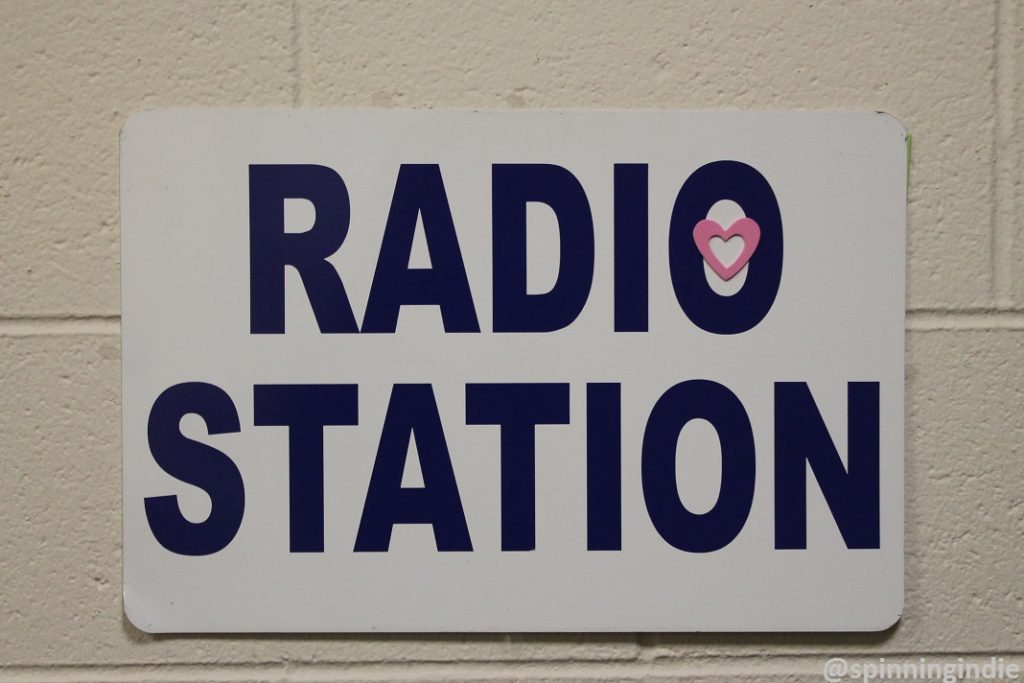On a brisk morning on Thursday, March 16, I set out from Richmond for a westerly road trip, with my first stop at WMWC at University of Mary Washington in Fredericksburg, Virginia. I parked on a street bordering the back of campus and as I made my way uphill, I heard some alarming, repetitive thunder-like sounds in the distance. When I asked someone for directions to the station building, I also inquired about the noise and was told, “it’s probably Quantico,” referring to the FBI-training facility.
Located in Woodard Hall, WMWC is in a bustling building that recently became home to the school’s College of Business. There’s a student gathering area and the post office just down the hall from the station. General Manager Abbey Bailey greeted me and showed me around the cozy station space that overlooks a busy hallway.
A junior, Bailey is in her first semester as General Manager of the station, overseeing around 120 club members. One of the biggest student groups (and the second oldest club on campus after the newspaper) at the approximately 4,000 student public university, the station still struggles to make its presence known on campus. Bailey said that College Radio Day last semester was huge for the station and a WMWC event with a CD giveaway even made the school paper.
Although twelve shelves full of CDs used to line the walls of WMWC, a recent revamp of the station led to giving away a big portion of that collection, mainly CDs by “lesser known artists,” according to Bailey. A smaller collection resides in the studio today and a few bins of mostly 1970s LPs are stashed in a corner. It was a fairly mainstream, yet random collection, with things like the Grease soundtrack and albums by the Beach Boys, Badfinger, Weird Al Yankovic, Duke Ellington and Deep Purple.
I mentioned that it seemed odd to me that there wasn’t much from the 1980s and I wondered out loud about the lack of punk records. She agreed with me and revealed that WMWC has made a point to keep all of its Korn CDs and told me that it’s become a running joke at the station. Bailey said that the physical music at the station doesn’t really get used and is mostly there for “posterity.” It doesn’t help that there’s no functional CD player. Although she plays vinyl records in her dorm room, she said that at the station it’s just easier to plug her phone in.
Of even greater interest to me than the records and CDs was a vintage console and cart machine on a nearby table. Similar to the possibly 1950s-era console that I used in my undergraduate college radio days at Haverford, it was a reminder of the long history of student radio at Mary Washington. It’s amazing that these pieces of equipment have remained at the station all these years, particularly since WMWC hasn’t always been in the same building. Some station archives are still at the station, including old paperwork and photos, images of which have been posted on the station’s social media channels. WMWC also hopes to digitize its collection of old carts.
Radio began on campus in the 1940s and Mary Washington College is listed as joining the Intercollegiate Broadcasting System as of October 11, 1945, according to the Gas Pipe Networks: A History of College Radio 1936-1946. Launching at the then-women’s college in 1946, WMWC celebrated its 50th anniversary in 1996 and in honor of the occasion, a collection of vintage photos were posted on the station’s website. Last year marked the station’s 70th anniversary!
Over the years, WMWC operated over AM carrier current, cable FM, campus television, and now via online streaming. An accounting of the station’s history on an old station website includes some interesting kernels of information, including the following:
During the stations resurgence in the early 1980s, WMWC began to broadcast on the 540 AM frequency. Due to a lack of maintenence [sic], just about nobody on campus could get the station by the 1990s. Rats had eaten through transmitter boxes in dorm rooms and the antennae WMWC used just wasn’t strong enough. This continued until the summer of 1995 when cable FM became a reality for the station. During the first semester of 1995, WMWC began broadcasting as 91.5FM. More students could hear the station, but it required a special attachment (provided for free by the station) to hook one’s stereo up to the cable box in each room.
In 1997, WMWC started a long-planned experiment with ‘radiating cable,’ which allowed people on campus to listen to the station in their dorm rooms without any special attachments. It started with one dorm being connected and now covers about five or six dorms. In addition, in 1999 the station became the background audio for the college’s cable station. Early attempts at Internet broadcasting were thwarted, but more attempts are being made in an attempt to bring the sounds of 91.5 to the world at large.”
The former WMWC website also mentions that a “cart replacement system” was installed at the station in 1997. A photo from around 1996 shows the cart machine still in the studio. I’m presuming that the instant replay machine that I spotted tucked into a corner of the studio was the new technology that was used at the time to “broadcast archived shows and interviews overnight with no DJs in the station.” Bailey told me that there are Sting and Limp Bizkit interviews on the currently unused instant replay machine, but they are unsure how to get them backed up elsewhere. There’s actually a collection of WMWC airchecks posted on the Normal Bias website, including some material pulled from the station’s instant reply machine in the 1990s.
Today, there are around 40 DJs hosting maybe 30 programs on WMWC. Programs generally air later in the day (the earliest show now starts at 10am), with 6 to 10pm shows the most popular. The building closes at midnight, so shows can’t go any later than that. Many programs play indie music, although there are some exceptions, including a rap show, a jazz show, some hardcore metal shows, and a program that plays a mashup of electronica and strings. There are also a couple of sports shows and a business professor does a program called “How to Get a Job,” which is connected with a class that she teaches. Bailey does a few different shows herself, including one that’s a mix of music and talk, during which she and a fellow English major discuss what they’ve been reading and also talk about films (they are both in the film club too).
Most music shows play digital music, using iTunes, Spotify and phones. Although there are CDs and LPs at WMWC, DJs aren’t trained on how to use the record player or the CD player (which was actually thrown away after it broke). Some DJs do bring in their own vinyl and they are welcome to use the record player.
Just back from Spring Break, Bailey told me that some stations staffers had gone to the Intercollegiate Broadcasting System’s annual conference in New York. Although she didn’t go this year, she had fond memories of her trip to the IBS event in 2015, telling me that it was an “incredible experience” and that she was able to connect with friends who work at other college radio stations. The two station staffers that attended this year’s event will be giving a presentation to the other members of WMWC about the conference.
A long-time radio fan, Bailey told me that she grew up on a college campus and listened to the school’s college radio station. She knew that she wanted to do college radio at Mary Washington. During the school’s Club Carnival, she “bee lined for the radio table” and soon got an electronic music show before eventually becoming the station’s treasurer and then ultimately General Manager. Thinking back on her pre-college years, Bailey reminisced that her one act of rebellion was listening to a favorite commercial radio station show after her bedtime. She told me that she wore headphones to secretly tune into the 9pm program.
Thanks to Abbey Bailey for sharing WMWC and its rich history with me. This is my 125th radio station field trip report, with more to come from my Virginia and Philadelphia-area travels. My most recent field trips can be found on Radio Survivor and a full list of all my station tour reports is compiled on Spinning Indie.

